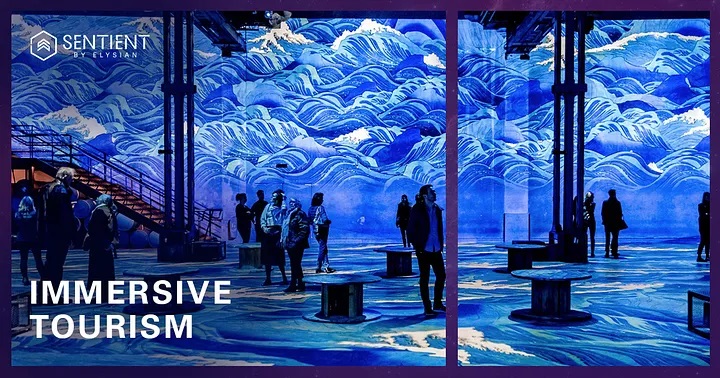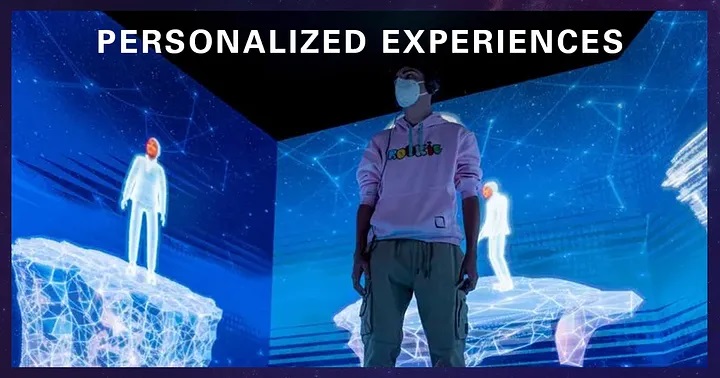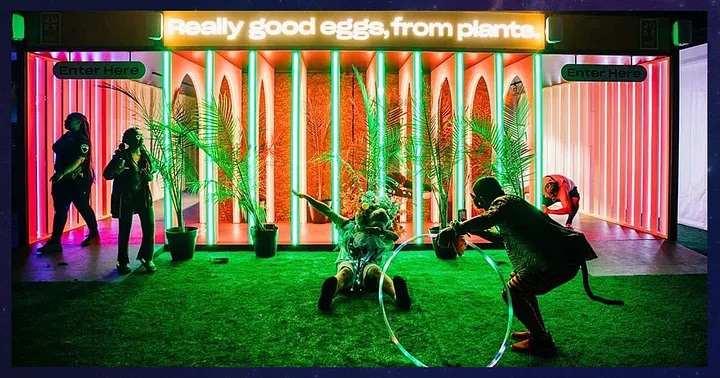How Immersive Experiences Enhance the Tourism Experience
Join us at Digital Signage China 2025 in Shenzhen, from February 17-19, to discover customized solutions for creating immersive experiences!

How Immersive Experiences Enhance the Tourism Experience
Tourism has grown into an in-depth study where immersive experiences turn tourists into active participants in the story of an area. These activities combine technology, creativity, and interaction with other people, and they give you a deep look into cultures, histories, and feelings. They make connections with places stronger and create lasting memories. This makes tourism more than just looking at something; it means experiencing it, becoming a part of its story, and being a part of it. Immersive experiences make traveling a lot more fun in several ways:
Deeper Cultural Immersion
Tourism has evolved from mere sightseeing to a quest for authentic experiences. To cater to this growing trend, destinations must focus on providing deeper cultural immersion.
Interactive storytelling: With the help of technology and imagination, immersive storytelling takes people to different times and places. Through interesting stories, tourists can become more connected to the history, culture, and traditions of the place they're visiting. With virtual reality, augmented reality, multimedia screens, and more, you can make experiences that are both real and fictional that you will never forget.
Authentic local encounters: Real encounters with locals are necessary for a real culture exchange. Tourists can learn a lot about the way of life in a place by having important interactions with locals. Community-led tours, homestays, and workshops are all great ways to make real links and learn about other cultures.
Sensory experiences: Sensory experiences are very important for making a cultural trip truly immersive. Using all of your senses — taste, smell, touch, and sound — makes you feel things and remember things that will last long after the trip is over. By using traditional crafts, local food, and soundscapes, destinations can give tourists unforgettable experiences that will stay with them.
Personalized and Tailored Experiences

Personalized and Tailored Experiences
The modern traveler seeks unique and personalized experiences that cater to their individual preferences. To meet this demand, the tourism industry is embracing technology and data-driven strategies.
Data-driven personalization: Data-driven personalization uses technology to look at how travelers behave and what they like, which lets them make personalized plans. Destinations can make personalized suggestions for lodging, events, and dining by learning about each person's interests. This personalized method makes travelers happier and more loyal.
Interactive mapping: It's different from regular maps because it uses virtual reality to make exploring more fun. Visitors can easily find secret gems, learn about historical sites, and get around by superimposing digital information on top of the real world. With interactive maps, sightseeing becomes an exciting journey that you can take part in.
Virtual try-ons and simulations: This allows travelers to experience products and activities before making a decision. By utilizing virtual reality technology, destinations can offer virtual tours of hotels, museums, and attractions. Additionally, virtual try-ons of local products or apparel can enhance the shopping experience. This innovative approach reduces decision-making time and increases customer confidence.
Enhanced Storytelling and Engagement
To capture the attention of modern travelers, the tourism industry must focus on creating compelling and engaging experiences. Enhanced storytelling and interactive elements are key to achieving this goal.
Immersive storytelling: It transports visitors to different times and places through the use of technology and creativity. By immersing themselves in captivating narratives, tourists can develop a deeper connection with the destination's history, culture, and heritage. Virtual reality, augmented reality, and multimedia displays can be used to create unforgettable experiences that blur the lines between fiction and reality.
Gamification: This transforms learning about a destination into a fun and rewarding experience. By incorporating game elements such as challenges, rewards, and competition, tourists can actively engage with the local culture and history. Gamified experiences encourage exploration, problem-solving, and a sense of accomplishment.
Interactive exhibits: By creating engaging and interactive displays, destinations can encourage exploration, discovery, and hands-on learning. Touchscreens, multimedia installations, and interactive games can be used to create dynamic and memorable experiences that inspire curiosity and wonder.
Sustainability and Education
The tourism industry has a huge impact on the environment and local communities.
To ensure long-term sustainability, it is essential to educate travelers about responsible tourism practices and raise awareness of environmental issues.
Virtual reality simulations: They offer a powerful tool for educating tourists about environmental challenges. By immersing visitors in virtual scenarios, destinations can highlight the consequences of unsustainable practices and inspire responsible behavior. These simulations can also showcase the benefits of sustainable tourism and encourage travelers to make eco-friendly choices.
Interactive learning experiences: This provides opportunities for visitors to deepen their understanding of the destination's ecology, history, and culture. Through engaging activities and hands-on experiences, tourists can learn about the delicate balance between tourism and conservation. Interactive exhibits, workshops, and guided tours can foster a sense of responsibility and appreciation for the natural and cultural heritage of the destination.
Community-based tourism: It promotes sustainable development by supporting local communities and empowering them to participate in the tourism industry. 1 By working closely with local people, destinations can create authentic and culturally rich experiences while ensuring that the benefits of tourism are shared equitably. This approach helps to preserve traditional lifestyles, protect the environment, and improve the livelihoods of local communities.
New Revenue Streams

New Revenue Streams
Immersive tourism offers a wealth of opportunities for generating revenue beyond traditional tourism models.
Ticket sales: they are the cornerstone of revenue generation in immersive tourism. By offering unique and unforgettable experiences, destinations can charge premium prices for tickets. Whether it's an interactive museum, a virtual reality adventure, or a live performance, ticket sales can be a significant source of income.
Merchandise: It presents a lucrative opportunity to extend the immersive experience beyond the physical location. By selling branded merchandise related to the immersive experience, destinations can generate additional revenue and reinforce brand loyalty. From apparel and souvenirs to exclusive collectibles, merchandise can cater to a wide range of customer preferences.
Partnerships: partnerships with local businesses can create synergistic revenue streams. By collaborating with restaurants, hotels, and retailers, immersive tourism destinations can offer bundled packages that provide added value to visitors. These partnerships not only increase revenue but also enhance the overall visitor experience. For example, offering discounted accommodation or dining options to ticket holders can create a more compelling package.
Examples of Immersive Experiences:
Immersive experiences are transforming the way people engage with destinations and attractions. By blending technology, creativity, and storytelling, these experiences offer visitors a deeper connection to the place they are visiting.
- Virtual reality tours of historical sites allow one to explore iconic landmarks and historical places in a completely new way. By using VR technology, visitors can step back in time and experience the past firsthand. This immersive approach allows for a deeper understanding and appreciation of historical events and cultures.
- Interactive museums with touchscreens and augmented reality are redefining the museum experience. By incorporating technology, museums can create engaging and interactive exhibits that cater to diverse audiences. Touchscreens allow visitors to explore information in a hands-on manner, while augmented reality enhances the physical space with digital content, bringing exhibits to life. The Museum of the Future in Dubai is a prime example of this innovative approach.
- Immersive theater performances and shows offer a captivating blend of storytelling, technology, and live performance. By creating immersive environments and engaging audiences through sensory experiences, these performances transport viewers to different worlds. From historical dramas to futuristic fantasies, immersive theater can evoke strong emotions and create lasting memories.
- Escape rooms themed around local history or culture provide a fun and challenging way to learn about a destination. By incorporating elements of local history or culture into the escape room experience, visitors can actively engage with the destination's heritage. Sentient By Elysian, with its expertise in creating immersive experiences, can develop captivating escape rooms that align with the unique character of a location.
- Culinary experiences that combine food, culture, and storytelling offer a multi-sensory journey that delights the palate and engages the mind. By incorporating local ingredients and traditional cooking methods, these experiences allow visitors to taste the culture of a destination. Through storytelling, chefs can share the history and significance of the dishes, creating a deeper connection between the food and the place.
- Outdoor adventure experiences with augmented reality elements enhance the thrill of exploration by adding a digital dimension. By overlaying digital information in the real world, visitors can access information about the environment, wildlife, and local history. This technology can also be used to create interactive games and challenges, making outdoor adventures even more engaging and memorable. Sentient By Elysian can help design and implement these augmented reality experiences to elevate outdoor adventures to new heights.
By leveraging technology and creativity, destinations can create unforgettable experiences that leave a lasting impression on visitors. Immersive experiences not only enhance visitor satisfaction but also contribute to sustainable tourism and local economic development.
If you're looking to create a truly unforgettable tourist attraction, Sentient By Elysian is a partner worth considering. Sentient By Elysian is a company that excels in creating immersive installations for tourists. They blend cutting-edge technology with imaginative concepts, offering a wide range of innovative solutions. Their portfolio showcases groundbreaking installations that push the boundaries of technology and creativity. They tailor their solutions to meet the unique needs and vision of each client, ensuring a personalized experience. Their successful projects demonstrate their ability to attract and engage visitors, making them a valuable partner for creating unforgettable tourist attractions.
Source: Sentient By Elysian




